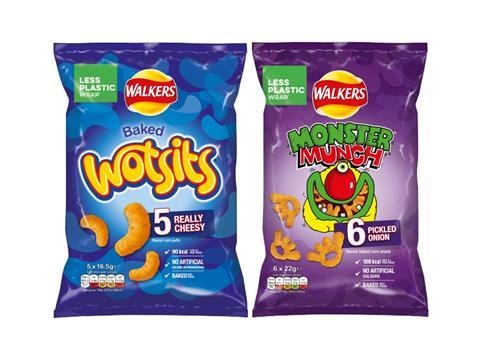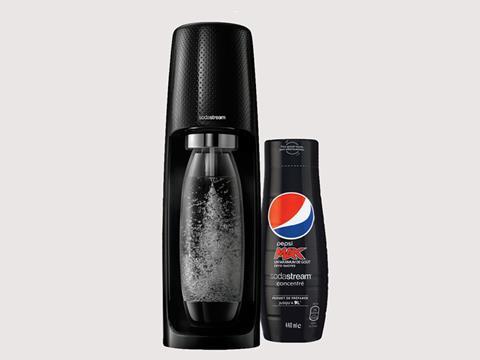
Last week, PepsiCo released its 2019 sustainability report, in which it highlights the progress it is making in the fields of carbon reduction and circularity. Fin Slater spoke with Archana Jagannathan, senior director for packaging sustainability in Europe, to unpack the key findings of the report, and discover what they mean for the future of the company.
From carbon emissions to rPET usage, PepsiCo has set ambitious sustainability goals across a variety of sectors. What is motivating your company to identify and implement these changes?
As a large, global business, we know we have a responsibility to use our scale and reach to reduce our impact on the environment while also helping others do the same. We all need to do our part to help bring about a sustainable food system. What’s more, the success of our company and the protection of our environment go hand-in-hand, so a focus on sustainability will always be a core part of our business strategy.
Regarding PepsiCo’s aim of achieving net-zero emissions by 2050 - in the packaging field, what steps and collaborations have you put in place to make this happen?
As well as our commitment to achieving net-zero emissions by 2050, we also recently signed the UN’s Business Ambition for 1.5°C and are developing a plan to deliver on this. Packaging is a significant contributor to carbon emissions, so we are focused on creating a circular economy that will reduce the carbon intensity of our products, as well as reduce plastic pollution.
We’re working across three areas: Reducing the amount of plastic packaging, increasing the amount of plastic that gets recycled and using more recycled content, and finally reinventing our packaging through looking at new materials and models.
In addition to in-house innovations in this area, we are also engaged in a number of partnerships and consortiums. For example, we are working with Carbios, a company pioneering new recycling technology that uses a biological enzyme to break PET into its original building blocks. We can then turn that into high-quality, recycled PET plastic. We are also a part of the NaturALL bottle alliance that aims to create bio-PET from biomass-based feedstock such as used cardboard and sawdust, significantly reducing emissions compared to traditional PET.
On the food packaging side, we are an active member of industry bodies like The Circular Economy for Flexible Packaging (CEFLEX) and collaborate and pay into packaging recovery organisations in all markets that aim to advance the collection, sorting and recycling of packaging.
The authors of your recent sustainability report identify packaging waste as an urgent global problem and set out three methods that PepsiCo is implementing to combat it. Could you talk us through the first of these: "Reducing the amount of plastic used"?
At PepsiCo, we design all our packaging with the aim of making it as efficient as possible and have worked to reduce the amount of packaging across all of our products for years. Over the last few years, we’ve made many of our plastic bottles lighter, allowing us to use less plastic and reduce the carbon impact of our drinks.

For our snacks, we have been trialing a new technology called “charge compaction” which causes our snacks to settle to the bottom of a bag during packaging, reducing the amount of packaging we need while still maintaining the same amount of product.
We have also employed new technology for our multipacks in the UK, so the outer-bag packaging is reduced by 30% across Walkers snacks and potato crisps.
Increasing the recyclability of plastics also plays a role - could you explain how PepsiCo is putting this into practice?
Higher recycling rates are so important because they allow us to reduce the amount of packaging going to landfill but also eventually create a circular economy that allows us to use more recycled content in our packaging. We aim to make 100% of our packaging recyclable, compostable, or biodegradable by 2025 and are about 90% of the way there today.
To close the loop, our goal is to reach 50% rPET inclusion in bottles across the European Union by 2030. Lipton Iced Tea and Tropicana juice are now being sold in 100% rPET bottles in some Western European markets as of this year.
However, this is a problem that we cannot solve on our own and so we are really trying to work with others to drive consistent recycling infrastructure across Europe. For example, snacks packaging is currently collected, sorted, and recycled into other products in the Netherlands and Germany, however this is not consistently the case across Europe.
We’re working to make sure that the EPR systems that we pay into across Europe are ‘fit for purpose’ to ensure waste is collected and effectively managed.
Lastly, PepsiCo is also focused on "reinventing" the plastic packaging it uses. What does this look like in real terms?
We’re working to radically reinvent the packaging and plastics we use to help reduce waste and improve circularity. One way in which we’re doing this is through our portfolio of products that go ‘Beyond the Bottle’ and avoid single-use packaging. In 2019 we expanded our SodaStream business in several European markets, which gives consumers access to both sparkling water and PepsiCo soft drinks but through a reusable model. Over the next five years, this could avoid an estimated 67 billion single-use plastic bottles.

We’re also exploring new materials for packaging like the NaturALL bottle alliance for bio-based PET and are working with Danimer Scientific on exploring new flexible packaging materials in some geographies.
The report highlights that you are testing 100% industrially compostable thin-film plant-based snack bags in selected markets. Could you give us some background on this product?
This is an area we are exploring in areas outside of Europe where recycling infrastructure is not so established. PepsiCo began work with Danimer Scientific to develop bio-based film resins created from corn and which were industrially compostable, meaning that the material will biodegrade over time in a composting facility. This material has been tested in-market in the U.S. with Tostitos and was piloted in Chile and India under the Artesanas and Lay’s brands.
In both India and Chile, we have been trying to understand the trends and attitudes of consumers towards recycling and composting, as well as consumer acceptance and perception.
We’re hoping the insights from those projects will help with our ambition to develop packaging that will compost in almost any condition. The ideal is to develop a material that is both recyclable and compostable.
What challenges does PepsiCo face in its move towards more sustainable practices?
We’re working to build sustainability into the DNA of our business. That brings challenges given the large number of geographies we operate across, the range of brands we own, and the scale and complexity of our supply chain. There are a number of stakeholders to bring on board, however, what that means is that even small changes can have a big impact not just in our company but beyond.
In your view, how has the COVID-19 pandemic affected packaging sustainability?
It is clearer than ever that organizations like PepsiCo and our partners need to take bold steps to catalyse positive change and bring about a stronger, more sustainable future. In terms of packaging it’s important the whole industry maintains the momentum which has been built in the past few years and we see more collaboration and more ambition to create a circular economy for packaging. We’re putting our support behind a green recovery and recently became a signatory of the EU Parliament’s Green Recovery Alliance.
Looking ahead, what’s next for PepsiCo in the realm of packaging sustainability?
For us it’s about building on the foundation of the work we’ve been progressing for the last few years, continuing on our rPET journey, working with others to drive systemic change, and taking the various innovative trials and pilots to the next level and testing them at scale. My personal mission is working with all of our brand teams at PepsiCo in Europe to embed our sustainable packaging vision into the heart of their current and future plans ensuring we respond to what our consumers want and doing what is right for society.











